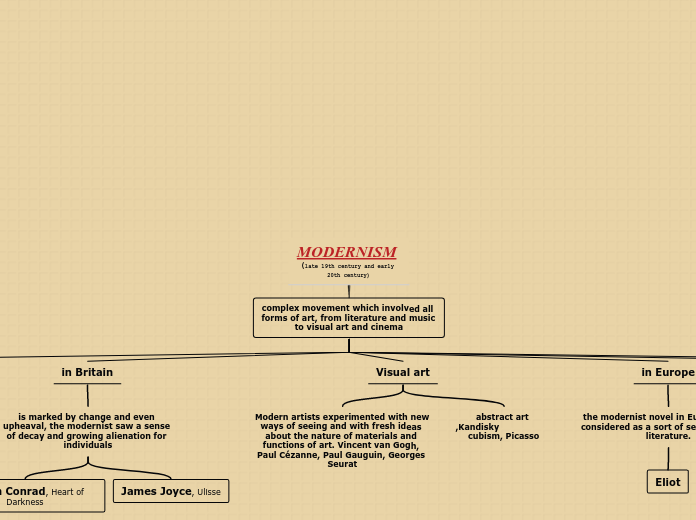a federica antonini 5 éve
1078
MODERNISM (late 19th century and early 20th century)

a federica antonini 5 éve
1078

Még több ilyen
the interpretation of dreams proposed a theory of human consciousness as multilayered, involving different levels of experence and memory; his theories suggested which perception of reality was therefore fundamentally subjective.
Einstein, the theory of relativity
Eliot
James Joyce, Ulisse
Joseph Conrad, Heart of Darkness
he keeps double identities at the same time. writers give their own vision of the world. subjective point of view, interior monologue and psychological narrative.
his theories contributed to the challenge that modernist fiction posed to the traditional idea of linear narrative. the time could not be measured according to units because it's a flow, a duration and not a series of points